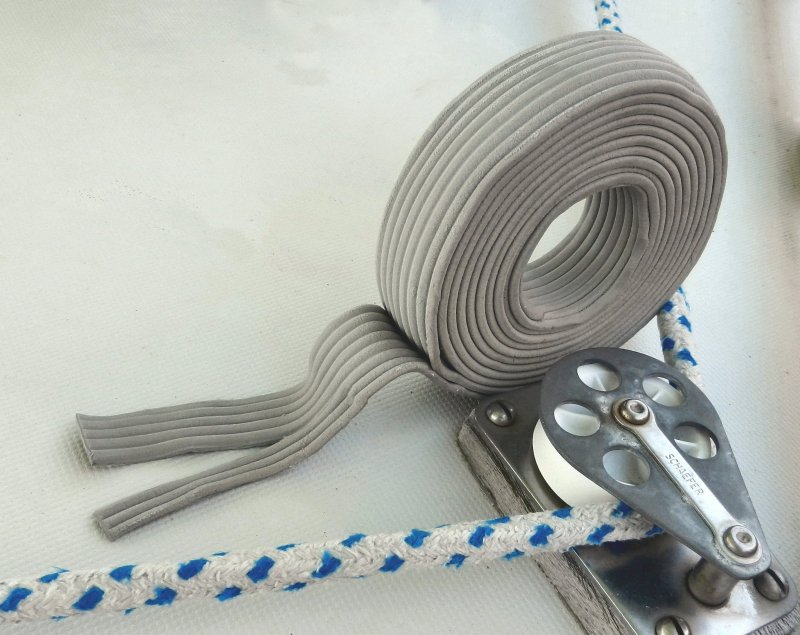ROPE
CAULK BEDDING
©
2013 Tor Pinney - All Rights Reserved
Forget those pricey marine
compounds! Rope caulk, a non-hardening,
stranded putty that costs a few dollars at any hardware store,
is ideal for bedding just about anything above the waterline.
Marine bedding compounds
generally do an excellent job of sealing deck fittings. However,
they can be expensive and messy, and they tend to cure in the
tube when stored for a long time, rendering the contents
useless.
When I was refitting my
ketch, Silverheels, a professional yacht repairman told
me he'd been using rope caulk bedding above the waterline for
years and had never had any leaks develop. I bought some that
day at the local Ace Hardware store, was delighted at how
user-friendly it is, and have been using it ever since to bed &
seal everything from stanchion bases to padeyes to portholes to
my anchor windlass. After 7 years nothing I've bedded with it
has ever leaked a drop.

You wouldn’t use it
for every task requiring caulking - polyurethane and polysulfide
tube caulks do some things better - but plain old rope caulk is
surprisingly versatile.
Rope caulk, sometimes sold as "cord weatherstrip," is a light
grey, clay-like putty that comes in a stranded roll, making it
easy to peel off in whatever length you want and lay a bead as
thin or as wide as needed. You can also mush it together and
roll or mold it by hand to suit the job. It doesn't run or stick
to your fingers and, unless it's exposed to the weather and
sunlight for a long time, it never hardens. It does, however,
soften on the roll in warm temperatures, making it stickier and
more difficult to peel off long strands. For this reason,
sometimes when I have a job to do with it I'll chill it in the
refrigerator first.
Once you've screwed down the
bedded fitting let it sit for a half an hour or more, ideally
under a warm sun, and then come back and tighten it down a tad
more. You'll see a little more caulk ooze out around the edges.
Trim it off with a putty knife. You may be able to tweak the
fasteners one or two additional times as the rope caulk warms
and softens naturally, but as with any caulking, don't
over-tighten and squeeze it all out.
Fittings bedded with it can
be taken up years later and the caulk will still be fresh and
malleable enough to scrape up with a putty knife and reuse. Its
shelf life seems to be limitless. Sold in most hardware stores,
a few dollars-worth can accommodate a typical boat's bedding
needs for years. Great stuff to have on board.
(Note: I don't recommend
rope caulk for bedding underwater fittings. It might be OK in a
pinch, but I don't know that from experience.)
~
End ~
Back to Cruising Tips